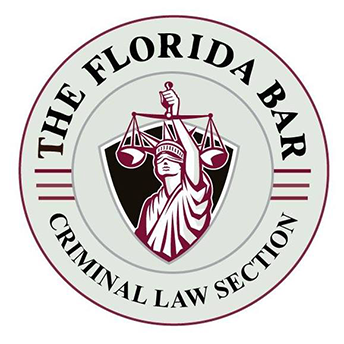Florida’s Criminal Punishment Code (CPC)
In 1997, the Florida legislature enacted the Criminal Punishment Code (CPC) as the primary sentencing policy in Florida. The CPC is commonly known as the “scoresheet.”
By assigning an offense severity level ranking at Level 1-10 for any non-capital felony offense, the scoring system is used to determine the minimum allowable sentence for felony crimes.
The criminal punishment code in Florida does not apply to misdemeanor offenses prosecuted in county court.
Under the CPC, all non-capital felonies are ranked in one of the following ways:
- in the offense severity level ranking chart in s. 921.0022, F.S.; or
- by default based on a ranking assigned to the felony degree of the offense as provided in s. 921.0023, F.S.
Based upon the severity level ranking assigned to the primary offense, points are assigned and accrue for each felony offense, additional offenses, and prior offenses. As the severity level escalates the sentence points also escalate.
The crime with the highest offense level is designated as the primary offense. Other crimes are listed as an additional offense, even if the other crime has the same offense level. The past criminal history is placed under the section for “Prior Record.”
The point value is higher when the offense is listed at the Primary Offense instead of in the section for an “Additional Offense” or “Prior Record.” As shown in Florida’s CPC chart, points are added or multiplied for other factors including:
- victim injury;
- use or possession of a firearm or semi-automatic weapon; or
- the commission of certain offenses like a level 7 or 8 drug trafficking offense;
- legal status violations;
- community sanction violations;
- prior serious felonies; or
- enhancement multipliers.
Florida has published tables and charts containing the most common offenses in each severity level to assist prosecutors and defense attorneys when completing the CPC.
Attorney on the Criminal Punishment Code in Florida
The attorneys at Sammis Law Firm understand how the Criminal Punishment Code (CPC) impacts the way felony offenses are resolved in the courtroom throughout Florida.
If you were accused of a felony, then contact us for a free consultation. We can explain the Rule 3.992(a) Criminal Punishment Code Scoresheet chart and how it might impact your case.
We can explain the severity level ranking for each non-capital felony offense, as well as how points are assigned for additional offenses and prior offenses. We can also show you how points are added or multiplied for other factors.
Call 813-250-0500.
History of the CPC
Before sentencing guidelines were first enacted in 1983, Florida allows the court to use broad discretion to sentence defendants up to the statutory maximum penalty allowed by law.
Critics of such broad sentencing discretion argued that indeterminate sentencing led to sentencing disparity and fundamental unfairness.
In Florida, sentencing guidelines first took effect in 1983 to limit judicial discretion and abolish parole for most offenses. Florida’s current sentencing scheme using the Criminal Punishment Code (CPC), became effective in 1998.
As explained in Section 921.002(1)(b), F.S., the primary purpose of the Code is to “punish the offender,” although rehabilitation is also listed as a secondary goal of the criminal justice system.
Consequences of the Points on the Score Sheet
Noncapital felonies sentenced under the Code are assigned an offense severity level ranking between Level 1 and Level 10. To determine the ranking, use the offense severity level ranking chart in Section 921.0022, F.S. If the offense is not listed in the chart, then by default the ranking is based on the felony degree of the offense as explained in Section 921.0023, F.S.
Points are assigned and accrue based upon the level ranking assigned to the primary offense, additional offenses, and prior offenses. As the levels escalate, so do the sentence points. The points in the scoresheet might be added or multiplied for other factors such as victim injury or the commission of certain drug trafficking offenses.
If the total sentence points are equal to or less than 44 points, then the lowest permissible sentence is a nonstate prison sanction unless the court determines that a prison sentence is appropriate.
Likewise, if the defendant qualifies under the Chronic Substance Abuser Exception (even if the points are greater than 44), then the person might be eligible for probation or community control.
As explained in Section 948.20, if the defendant is convicted of a non-violent felony that scores less than 60 points and is found to be a “chronic substance abuser,” then the court may sentence the defendant to drug offender probation instead of prison.
On the other hand, if the total sentence points are greater than 44 points, then the lowest permissible sentence in prison months is calculated by subtracting 28 points from the total sentence points and decreasing the remaining total by 25 percent.
The permissible sentencing range under the Criminal Punishment Code (CPC) chart in Florida shows the lowest permissible sentence scored up to and including the maximum penalty provided under s. 775.082, F.S., unless the court finds mitigation.
However, if the offender’s offense has a mandatory minimum term that is greater than the scored lowest permissible sentence, the mandatory minimum term supersedes the lowest permissible sentence scored as explained in Fla. R. Crim. P. 3.704(d)(26).
In some cases, the defendant may qualify for prison diversion including:
- Section 775.082(10) provides for diversion for an offender whose offense is a nonviolent third degree felony and whose total
sentence points are 22 points or fewer; - Section 921.00241 provides for diversion into Florida Department of Corrections’ prison diversion program for certain nonviolent third degree felony offenders; and
- Section 948.01 provides for diversion into a post adjudicatory treatment-based drug court program for certain nonviolent felony offenders.
Most Common Offenses by Offense Severity Level
The most common offenses listed by severity level include:
- Level 1
- Felony Driving with Suspended License
- Felony Petit Theft 3rd Conviction
- Felony Possession of Marijuana over 20g
- Level 2
- Grand Theft, $300‐$5,000
- Utter Forged Instrument
- Credit Card Fraud
- Level 3
- Possession of Cocaine
- Possession of a Controlled Substance
- Sale, Manufacture, Deliver Marijuana
- Level 4
- Burglary of Unoccupied Dwelling
- Grand Theft Auto
- Battery of Law Enforcement Officer
- Level 5
- Traffic in Stolen Property
- Sale, Manufacture, Deliver Cocaine
- Felon in Possession of Firearm
- Level 6
- Aggravated Assault with No Intent to Kill
- Felony Battery
- Robbery with No Gun or Deadly Weapon
- Level 7
- Burglary of an Occupied Dwelling
- Aggravated Battery with Deadly Weapon
- Sex Offender Fail to Comply with Conditions
- Level 8
- Burglary, Armed with Explosives or Weapon
- Burglary, Assault Any Person
- Sexual Battery with Victim Age 12‐15
- Level 9
- Robbery with a Gun or Deadly Weapon
- Molestation of Victim Under 12
- Trafficking Heroin 28g to 30kg
- Level 10
- 2nd Degree Murder
- 1st Degree Murder
- Home Invasion Robbery
Additional Resources
Scoresheet Preparation Manual of Florida’s CPC – Visit the Florida Department of Corrections website to find the Scoresheet Preparation Manual of the Florida Criminal Punishment Code. Effective 07/01/2018, the preparation manual was prepared by the Office of the State Courts Administrator and the Florida Department of Corrections.
Analysis of Florida’s Criminal Punishment Code – Visit the website of the Community Resources for Justice (CRJ) to learn more about the history of social activism and focus on preventing crimes. Published in June of 2019, CRJ published “An Analysis of Florida’s Criminal Punishment Code” which was prepared for the Florida Legislature. The CJI recommended that Florida consider the following policy changes:
- using a recommended sentence range with lower and upper limits to guide judicial decisions;
- creating a right of appeal to a higher court for sentences that exceed specified ranges; implementing post‐release supervision for appropriate defendants;
- shortening sentence lengths since the 85 percent time‐served requirement applied to Florida inmates;
- allowing departure from a recommended range with a finding of mitigated or aggravated circumstances on the record and in writing; and
- relying on two primary factors in determining a sentence.
This article was last updated on Friday, February 4, 2022.














